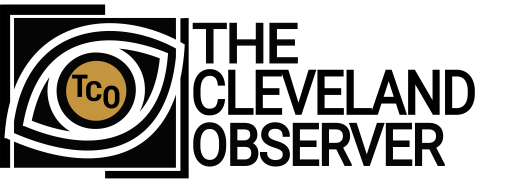|
|
By Sharon Lewis
If you read part 1 of “Evidence-based Health and Nutrition Tips”, you know that eating whole eggs in moderation is healthy and will not raise your cholesterol and that you need to cut down on sugary beverages as they can play a big role in weight gain. You know to eat more fruits and vegetables for overall health and weight control, and finally, restrictive diets can be defeating in the long run, causing rebound weight gain. This month, the discussion includes proper hydration, eating less salt, and eating less saturated fats.
5. Hydration
 Do you know that if you experience the sensation of thirst, you are already dehydrated? The sensation of thirst is your body’s way of letting you know that your water reserves have dropped below what is needed for optimal function. You’ll know to drink some water or other non-dehydrating beverage. The US Government guidelines include drinking 6-8 eight-ounce glasses of water daily. According to the Mayo Clinic (Healthy Lifestyles: Nutrition and Healthy Eating, October 12, 2022), most healthy people can stay hydrated by drinking water and other fluids whenever they feel thirsty. For some people, fewer than eight glasses a day might be enough. Other people might need more. You might need to modify your total fluid intake based on several factors:
Do you know that if you experience the sensation of thirst, you are already dehydrated? The sensation of thirst is your body’s way of letting you know that your water reserves have dropped below what is needed for optimal function. You’ll know to drink some water or other non-dehydrating beverage. The US Government guidelines include drinking 6-8 eight-ounce glasses of water daily. According to the Mayo Clinic (Healthy Lifestyles: Nutrition and Healthy Eating, October 12, 2022), most healthy people can stay hydrated by drinking water and other fluids whenever they feel thirsty. For some people, fewer than eight glasses a day might be enough. Other people might need more. You might need to modify your total fluid intake based on several factors:
- Exercise. If you do any activity that makes you sweat, you must drink extra water to cover the fluid loss. Drinking water before, during, and after a workout is important.
- Environment. Hot or humid weather can make you sweat and require additional fluids. Dehydration also can occur at high altitudes.
- Overall health. Your body loses fluids with a fever, vomiting, or diarrhea. Drink more water or follow a doctor’s recommendation to drink oral rehydration solutions. Other conditions requiring increased fluid intake include bladder infections and urinary tract (kidney) stones.
- Pregnancy and breast-feeding. If you are pregnant or breastfeeding, you may need additional fluids to stay hydrated. The Cleveland Clinic Online Newsletter, Health Essentials (October 14, 2022/Nutrition), states that the National Academies of Science, Engineering, and Medicine recommends 125 ounces (3.7 liters) for men and 91 ounces (2,7 liters for women.
According to preventive medicine specialist Roxanne B. Sukol, MD, “Your size, metabolism, location, diet, physical activity, and health all factor into how much water you need.”
The big question is, how do you know if you are consuming enough water? The best way to tell if you are getting enough water is to look at your urine. Dr. Sukol stated, “If it (your urine) is a pale yellow, you are on the right track. You could probably use more fluids if your urine is darker or has a strong odor.”
The good news is that 20% of your daily fluids come from your food. Yes, you can eat your water! Many foods have a high water content and can help you meet your fluid goals. For example:
- Cucumbers
- Watermelon
- Berries
- Iceberg Lettuce
For most, consuming too much salt can raise your blood pressure. People with high blood pressure (hypertension) are more likely to develop heart disease and or have a stroke. According to the Medicine Net article, “What Are 10 Tips for a Healthy Lifestyle?”, your salt intake should not exceed one gram of salt daily. One gram is equal to one teaspoon. In many cases, the salt that we consume is hidden, meaning that we do not personally add it to our food. It is in most processed foods and some condiments that you consume. Eat consciously, add less salt to your food when preparing it, and avoid salty snacks. Lowering salt intake will decrease your risk of high blood pressure and stroke.
7. Saturated Fats
According to the American Heart Association, “Saturated fats are found in animal-based foods like beef, pork, poultry, full-fat dairy products and eggs and tropical oils like coconut, and palm. They are typically solid at room temperature and are sometimes called “solid fats.” Saturated fats can cause problems with cholesterol levels, increasing your risk of heart disease. Replacing foods that are high in saturated fat with healthier options can lower the risk of heart disease. Examples of foods with saturated fat are:
- beef
- lamb
- pork
- poultry, especially with skin
- beef fat (tallow)
- lard and cream
- butter
- cheese
- ice cream
- coconut
- palm oil
- palm kernel oil
- some baked and fried foods
The American Heart Association recommends aiming for a dietary pattern that achieves 5% to 6% of calories from saturated fat. For example, if you need about 2,000 calories daily, no more than 120 should come from saturated fat. That’s about 13 grams of saturated fat per day. Remember the big picture, your overall eating pattern. Apply this general guidance regardless of where your food is prepared or consumed.
As was stated last month, knowledge is power. Not everyone will make every suggested change in this article overnight. However, knowing the right things to do based on sound scientific principles can greatly impact your overall health. So, start with small incremental changes and work your way up. May your journey be a success!






